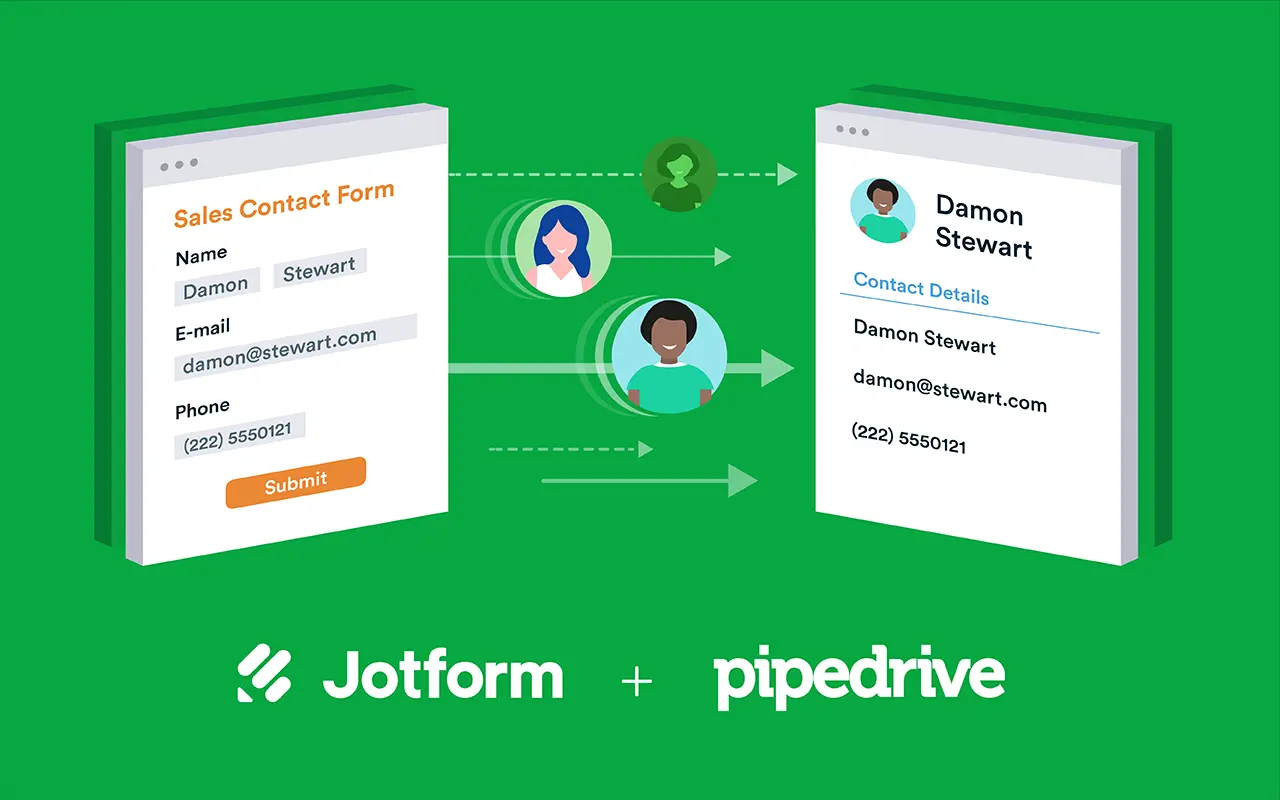
In today’s fiercely competitive business landscape, understanding and catering to your customers is no longer optional; it’s paramount. This is where the synergistic power of Customer Relationship Management (CRM) systems, strategic marketing efforts, and insightful customer surveys comes into play. This comprehensive guide delves into how these three elements intertwine to elevate customer loyalty, drive business growth, and foster lasting relationships. We’ll explore the intricacies of each component, examine their combined impact, and provide actionable strategies to implement them effectively.
The Cornerstone: Understanding CRM
At its core, a CRM system acts as the central nervous system of your customer interactions. It’s a technological backbone designed to manage and analyze customer data throughout the customer lifecycle, from initial contact to post-purchase support. But CRM is far more than just a database; it’s a strategic approach to customer relationship management. It empowers businesses to:
- Centralize Customer Data: Instead of scattering customer information across spreadsheets, emails, and various platforms, a CRM consolidates all data in one accessible location. This includes contact details, purchase history, communication logs, and even social media interactions.
- Improve Communication: With a 360-degree view of each customer, CRM enables personalized and relevant communication. Sales teams can tailor their pitches, marketing teams can segment audiences effectively, and customer service representatives can offer proactive support.
- Streamline Sales Processes: CRM automates many sales tasks, such as lead generation, lead scoring, and pipeline management. This frees up sales representatives to focus on building relationships and closing deals.
- Enhance Customer Service: CRM provides customer service representatives with instant access to customer information, allowing them to resolve issues quickly and efficiently.
- Analyze Data for Insights: CRM systems offer powerful analytics capabilities, enabling businesses to track key performance indicators (KPIs), identify trends, and make data-driven decisions.
Selecting the right CRM system is crucial. Consider factors such as your business size, industry, budget, and specific needs. Some popular CRM platforms include Salesforce, HubSpot, Zoho CRM, and Microsoft Dynamics 365. Each platform offers a range of features and pricing options, so it’s essential to research and compare them carefully before making a decision.
Marketing’s Role in the CRM Ecosystem
Marketing and CRM are inextricably linked. Marketing efforts generate leads, nurture prospects, and ultimately convert them into customers. CRM, in turn, provides the data and insights to optimize marketing campaigns for maximum impact. Here’s how marketing integrates with CRM:
- Lead Generation and Nurturing: CRM helps track leads from various sources, such as website forms, social media campaigns, and email marketing. Marketing automation tools within CRM can then nurture these leads with targeted content and personalized communication, guiding them through the sales funnel.
- Customer Segmentation: CRM allows marketers to segment customers based on demographics, behavior, purchase history, and other criteria. This enables highly targeted marketing campaigns that resonate with specific customer groups.
- Personalized Marketing: With access to customer data, marketers can personalize email campaigns, website content, and product recommendations. This personalization enhances customer engagement and drives conversions.
- Marketing Campaign Tracking and Analysis: CRM provides tools to track the performance of marketing campaigns, such as email open rates, click-through rates, and conversion rates. This data helps marketers optimize their campaigns for better results.
- Content Personalization: By understanding customer preferences and behaviors through CRM data, marketers can personalize the content customers see on websites, in emails, and across other channels. This makes the content more relevant and engaging.
Effective marketing within a CRM framework involves:
- Defining your target audience meticulously.
- Creating compelling content that resonates with your audience.
- Utilizing marketing automation tools to streamline your efforts.
- Analyzing your results and making data-driven adjustments.
The Power of Customer Surveys in the CRM Strategy
Customer surveys are invaluable tools for gathering feedback, understanding customer needs, and improving customer satisfaction. When integrated with a CRM system, surveys provide a wealth of actionable insights. Here’s how surveys contribute to a robust CRM strategy:
- Gathering Customer Feedback: Surveys allow you to directly ask customers about their experiences, preferences, and pain points. This feedback is essential for understanding what’s working well and what needs improvement.
- Measuring Customer Satisfaction: Surveys can include questions designed to measure customer satisfaction, such as the Net Promoter Score (NPS) or Customer Satisfaction Score (CSAT). These metrics provide a clear picture of how customers feel about your brand.
- Identifying Areas for Improvement: Survey results can highlight areas where your products, services, or customer service fall short. This information allows you to make targeted improvements to enhance the customer experience.
- Personalizing the Customer Experience: Survey data can be used to personalize future interactions with customers. For example, if a customer indicates a preference for a specific product, you can tailor your marketing messages to promote that product.
- Improving Products and Services: Survey feedback can provide valuable insights for product development and service improvements. By understanding customer needs and preferences, you can create products and services that better meet their needs.
- Proactive Customer Service: Identify unhappy customers through survey responses and proactively reach out to address their concerns. This can prevent churn and turn negative experiences into positive ones.
To maximize the effectiveness of customer surveys within your CRM strategy, consider these best practices:
- Define your objectives: What specific information are you trying to gather?
- Choose the right survey type: Consider different survey formats, such as Net Promoter Score (NPS), Customer Satisfaction (CSAT), and Customer Effort Score (CES) surveys.
- Keep it concise: Shorter surveys tend to have higher completion rates.
- Use clear and concise language: Avoid jargon and technical terms.
- Segment your audience: Tailor your surveys to specific customer groups.
- Offer incentives: Consider offering a small incentive to encourage participation.
- Analyze the results: Don’t just collect data; analyze it to identify trends and insights.
- Take action: Use the insights to make improvements and personalize the customer experience.
Integrating CRM, Marketing, and Surveys: A Synergistic Approach
The true power lies in the integration of CRM, marketing, and customer surveys. When these three elements work in harmony, businesses can achieve a level of customer understanding and engagement that drives significant results. Here’s how they integrate:
- Data-Driven Customer Segmentation: CRM data informs marketing segmentation, allowing for targeted survey distribution. For example, customers who purchased a specific product can receive a survey about that product.
- Personalized Survey Distribution: Surveys can be sent automatically based on customer behavior or lifecycle stage, triggered by CRM data.
- Closed-Loop Feedback: Survey responses are automatically integrated into the CRM, providing a complete view of the customer. Marketing and sales teams can then use this data to personalize interactions and address customer concerns.
- Marketing Campaign Optimization: Survey results inform the effectiveness of marketing campaigns. Marketers can use the feedback to adjust their strategies and improve their messaging.
- Sales Process Improvement: Survey data can reveal customer needs and preferences, enabling sales teams to personalize their pitches and offer relevant solutions.
- Customer Service Enhancement: Customer feedback provides valuable insights for improving customer service processes and training.
- Churn Prevention: By identifying unhappy customers through surveys, businesses can proactively address their concerns and prevent churn.
Here’s a more detailed example of how this synergy works in practice:
- A customer purchases a product.
- The CRM system triggers an automated email containing a customer satisfaction survey a few days later.
- The customer completes the survey, providing feedback about their experience.
- The survey responses are automatically integrated into the CRM.
- The sales team or customer service team reviews the feedback. If the customer is unhappy, they reach out to resolve the issue. If the customer is happy, they use the feedback to further personalize future interactions.
- The marketing team analyzes the feedback to identify areas for improvement in their marketing campaigns.
- The product development team uses the feedback to improve the product or develop new features.
Actionable Strategies for Implementation
Successfully integrating CRM, marketing, and customer surveys requires a strategic approach and a commitment to ongoing optimization. Here are some actionable strategies to help you implement these elements effectively:
- Choose the Right CRM: Select a CRM system that meets your specific needs and integrates seamlessly with your existing marketing and survey tools.
- Define Clear Objectives: Before implementing any of these strategies, define your goals and objectives. What do you want to achieve with your CRM, marketing, and surveys?
- Segment Your Audience: Segment your customers based on demographics, behavior, and purchase history. This will allow you to tailor your marketing messages and survey questions to specific customer groups.
- Develop a Survey Strategy: Plan your survey strategy carefully. Determine when to send surveys, what questions to ask, and how to analyze the results.
- Automate Your Processes: Automate as many processes as possible, such as survey distribution, data integration, and follow-up communication.
- Train Your Team: Ensure that your team is properly trained on how to use the CRM, marketing, and survey tools.
- Monitor and Analyze Your Results: Regularly monitor and analyze your results to identify areas for improvement.
- Iterate and Optimize: Continuously iterate and optimize your strategies based on your results.
- Prioritize Data Privacy and Security: Always prioritize the privacy and security of customer data. Comply with all relevant data privacy regulations, such as GDPR and CCPA.
- Foster a Customer-Centric Culture: Make customer satisfaction a top priority throughout your organization.
Metrics to Track and Measure Success
To gauge the effectiveness of your CRM, marketing, and survey efforts, it’s essential to track relevant metrics. Here are some key performance indicators (KPIs) to monitor:
- Customer Acquisition Cost (CAC): The cost of acquiring a new customer.
- Customer Lifetime Value (CLTV): The predicted revenue a customer will generate over their relationship with your business.
- Conversion Rates: The percentage of leads that convert into customers.
- Customer Retention Rate: The percentage of customers who remain customers over a specific period.
- Churn Rate: The percentage of customers who stop doing business with you.
- Net Promoter Score (NPS): A measure of customer loyalty.
- Customer Satisfaction Score (CSAT): A measure of customer satisfaction.
- Customer Effort Score (CES): A measure of how easy it is for customers to do business with you.
- Survey Completion Rates: The percentage of customers who complete your surveys.
- Website Traffic and Engagement: Track metrics like website visits, bounce rates, and time on page.
- Email Marketing Metrics: Monitor open rates, click-through rates, and conversion rates.
- Social Media Engagement: Measure likes, shares, comments, and other interactions on social media.
Regularly analyzing these metrics will provide valuable insights into the performance of your CRM, marketing, and survey efforts. This data allows you to make informed decisions and optimize your strategies for maximum impact.
Overcoming Challenges and Common Pitfalls
While the integration of CRM, marketing, and customer surveys offers significant benefits, it’s important to be aware of potential challenges and pitfalls. Here are some common issues and how to address them:
- Data Silos: Data silos can hinder effective CRM, marketing, and survey efforts. Ensure that your CRM integrates seamlessly with your other systems.
- Poor Data Quality: Inaccurate or incomplete data can lead to flawed insights. Implement data cleansing and validation processes.
- Lack of Integration: If your CRM, marketing automation, and survey tools don’t integrate, you’ll miss out on the synergistic benefits. Choose tools that integrate well or use middleware to connect them.
- Inadequate Training: Without proper training, your team won’t be able to use the tools effectively. Invest in comprehensive training programs.
- Ignoring Customer Feedback: Collecting feedback is only half the battle. Failing to act on customer feedback can damage your reputation. Implement a system for responding to customer feedback and making improvements.
- Over-Surveying Customers: Bombarding customers with too many surveys can lead to survey fatigue and lower response rates. Be mindful of the frequency and length of your surveys.
- Focusing on the Wrong Metrics: Track the metrics that are most relevant to your business goals. Avoid getting bogged down in vanity metrics.
- Lack of Executive Buy-In: Without buy-in from leadership, it can be difficult to implement these strategies effectively. Communicate the benefits of CRM, marketing, and surveys to your executive team.
- Resistance to Change: Implementing new systems and processes can be challenging. Be prepared to address resistance to change and provide ongoing support to your team.
The Future of CRM, Marketing, and Customer Surveys
The landscape of CRM, marketing, and customer surveys is constantly evolving. Here are some trends to watch:
- Artificial Intelligence (AI): AI is transforming CRM, marketing, and surveys. AI-powered chatbots, predictive analytics, and personalized recommendations are becoming increasingly common.
- Personalization: Customers expect personalized experiences. Businesses are using data to tailor their interactions with customers in real-time.
- Omnichannel Marketing: Customers interact with businesses across multiple channels. Businesses are adopting omnichannel strategies to provide a seamless customer experience.
- Mobile CRM: Mobile CRM apps are becoming increasingly popular, allowing sales and service teams to access customer data and manage their activities on the go.
- Data Privacy: Data privacy regulations are becoming stricter. Businesses must prioritize data privacy and comply with all relevant regulations.
- Voice of the Customer (VoC): Businesses are increasingly focused on listening to the voice of the customer and using customer feedback to drive improvements.
- Hyper-Personalization: Going beyond basic personalization, hyper-personalization uses AI and advanced analytics to create highly individualized experiences for each customer.
By staying informed about these trends and adapting your strategies accordingly, you can ensure that your CRM, marketing, and survey efforts remain effective in the years to come.
Conclusion: Cultivating Lasting Customer Relationships
In conclusion, the integration of CRM, marketing, and customer surveys is a powerful strategy for driving customer loyalty, business growth, and long-term success. By leveraging the capabilities of these three elements, businesses can gain a deeper understanding of their customers, personalize their interactions, and create exceptional customer experiences.
Remember, the key is to:
- Choose the right tools for your needs.
- Develop a clear strategy.
- Prioritize data quality.
- Train your team.
- Continuously monitor and optimize your efforts.
- Put the customer first in everything you do.
By embracing this approach, you can cultivate lasting customer relationships, build a loyal customer base, and achieve sustainable business success. The journey towards a customer-centric business may require effort, but the rewards – increased customer loyalty, higher revenue, and a stronger brand reputation – are well worth the investment.

